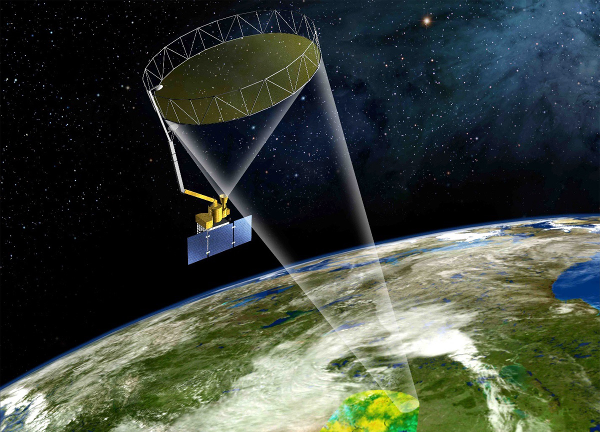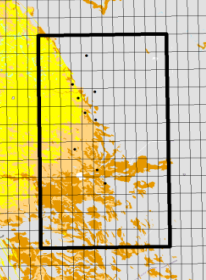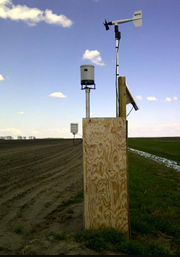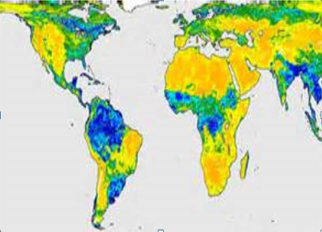Ground sampling: microwave data
Two L-band ground based radiometers (one from the University of Sherbrooke and one from Environment Canada) and a ground based C-band scatterometer (owned by the University of Calgary) will be deployed during SMAPVEX16-MB. The main objectives of these ground based microwave measurements are to: validate SMAP radiometer data, analyse the scaling effect on microwave measurements and on soil moisture inversion algorithms using ground, airborne, and satellite microwave data, and investigate the combination of L-band radiometer and C-band scatterometer data for both soil moisture retrieval and disaggregation.
Of the 50 SMAPVEX16-MB fields, one field of canola and one field of wheat have been selected for radiometer and scatterometer measurements. These crop types were selected to complement SMAPVEX16-IO field campaign occurring in Iowa where radiometer and scatterometer measurements are being collected over soybeans and corn.
A temporary in situ station will be installed inside the radiometer footprint for soil moisture, soil temperature and air temperature measurements. These will be supplemented with additional hand-held measurements as follow:
Soil moisture and surface temperature: Each day the radiometer team will collect soil moisture and surface temperature measurements at 8 points (x3 replicates) around the radiometer/scatterometer footprints on both the canola and wheat fields.
Soil roughness (once in Window 1) and vegetation (twice per week) will also be collected around the radiometer footprint. The vegetation measurements collected by the radiometer team will be limited to biomass and height measurements.
For the scatterometer and radiometers PM acquisitions, soil moisture, soil temperature and vegetation samples (for vegetation water content determination) will be collected, around the radiometer/scatterometer footprints (8 points, x3 replicates), as close in time as possible with these microwave measurements.





